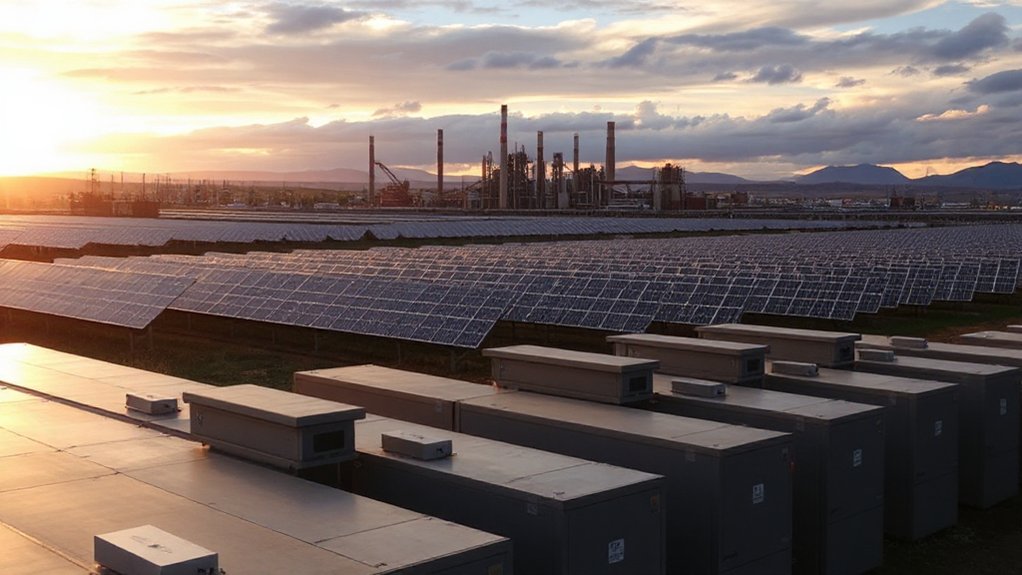Battery technology is revolutionizing energy markets, making fossil fuels increasingly obsolete. Lithium-ion, solid-state, and flow batteries now provide critical storage for intermittent renewable sources. With response times of mere milliseconds, these systems prevent blackouts better than traditional plants. Governments worldwide are boosting the shift through tax credits and mandates. Meanwhile, the economics speak for themselves—batteries create jobs while peaker plants disappear. The extinction of fossil fuels? It’s already happening.
While the world scrambles to reduce carbon emissions, batteries have quietly become the unsung heroes of our energy future. Lithium-ion technology currently rules the roost, but it’s just the beginning. Solid-state batteries are coming with better energy density and fewer “will it explode in my pocket?” concerns. Meanwhile, flow batteries are handling the heavy lifting for grid storage. Not sexy, but effective.
The numbers don’t lie. Global battery storage is set to hit a whopping 411 GW by 2030. That’s not chump change. The US added 4.6 GW in 2022 alone, while China’s rushing to install 30 GW by 2025. Australia and Europe? They’re all in too. Fossil fuel executives must be sweating.
Here’s the deal: batteries solve renewable energy‘s biggest problem – intermittency. Sun doesn’t always shine. Wind doesn’t always blow. Duh. Batteries bridge that gap, storing excess power for later use. No more wasted solar energy on sunny days. No more useless wind turbines on calm nights. The grid gets stable, reliable power without burning dinosaur remains. With response times as quick as 10 milliseconds, these systems can prevent regional blackouts when the grid falters.
The economic impact? Massive. Those expensive peaker plants that run a few hours a year? Becoming obsolete. Battery systems create new revenue streams through grid services. They make existing infrastructure work harder. Jobs in the clean energy sector? Booming. The practice of energy arbitrage allows storage systems to generate revenue by buying electricity when prices are low and selling when prices peak.
Peaker plants dying, grid services thriving, infrastructure maximized—clean energy jobs skyrocketing as batteries rewrite the economics.
It’s not all rainbows and unicorns, though. Battery production has environmental issues. Mining isn’t pretty. Disposal presents challenges. But recycling technology is developing fast, and compared to pumping endless carbon into our atmosphere? No contest. New techniques are emerging for valuable element recovery from used batteries, supporting a more sustainable circular economy.
Governments are finally catching on. Tax credits, mandates, and supportive policies are popping up worldwide. California’s pairing storage requirements with solar installations. The EU’s Green Deal is backing batteries big time.
The future’s looking charged. Long-duration storage. Vehicle-to-grid integration. AI-optimized battery management. Hybrid systems combining multiple technologies. Fossil fuels had a good run, but their extinction event has arrived. And it’s powered by batteries.








